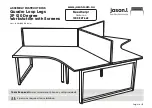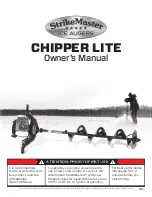
U S E R M A N UA L
U S E R M A N UA L
EN
6
OPEN CENTRIC
Guide pivoting lever
(2)
up to stop, moving the
centering axes (2 semi-axes) in, thus releasing the
centric.
Centric opened
(3)
. Fixing of condyle balls released.
The top may be freely moved.
CLOSE CENTRIC
Move pivoting
(4)
lever down to stop. The two semi-
axes are guided out until softly stopping against
the condylar centre, fixing the Artex top section in
centered position. Centric closed. Visible fixation on
condylar centre by semi-axis. 2 Support in inclined
Centric closed
(5)
. Visible fixation on condylar cen-
tre by semi-axis.
ADJUSTMENT OF BENNETT ANGLE
Open centric
(6)
. Release locking screw of Bennett
angle with allen key. Adjust condylar unit from –5°
to +30° by rotary button.
Fig.: Bennett angle = 0°.
Rotate Bennett angle
(7)
to required scale setting
by means of the rotary knob, then lock by allen key.
Fig.: Bennett angle = 30°.
ADJUSTMENT OF CONDYLE PATH INCLINATION
Release condyle
(8)
path inclination (HCI) set screw
with allen key. Adjust required angle by rotating the
condylar box. then fix HCI set screw with allen key.
Adjustment
(9)
of HCI from -20° to +60°.
Read angle of inclination from front edge of rear
section (congruent with the scale).
Fig.: HCI = +60°.
SEQUENCE OF MOVEMENT
Condyle balls in centered position and during mo-
vement with different Bennett angles (view into
condyle)
ATTENTION
Sequences of movement in Arcon articulators must
be performed in permanent contact of condyle
balls (bottom part of articulator) with the condylar
box (top part of articulator). Only thus they can be
reproduced.
(10)
Bennett angle adjusted to 0°. Condylar spheres
in centered position = initial position for move-
ments.
(11)
Bennett angle adjusted to 0°. Condyle ball gui-
ded in all three dimensions in permanent contact
with the condylar unit. The condyle ball may never
lose contact with the fossa, neither in cranial nor
mesial direction.
(12)
Bennett angle adjusted to 30°. Condyle ball in
centered position = initial position for movements.
(13)
Bennett angle adjusted to 30°. Condyle ball
guided in all three dimensions in permanent contact
with the condylar box.
ARBITRARY PIN / CENTRE OF AXIS
Maxillary cranium/axis-based transfer of the maxilla
can be effected directly on the articulator by adap-
ting the facebow. Both the arbitrary pin (14) (which
reproduces the position of the ear opening/bore of
the porus buttons) and the axis mean point can be
used as a reference.
DISTRACTION
Loose screw from frontal.
(15)
Install distraction
to the desired value (0-3 mm) and fix it with the
screw
(16)
.
Содержание ARTEX cpr
Страница 2: ......
Страница 3: ... BL ...
Страница 14: ...BM BO BQ BS BN BP BR BT ...
Страница 15: ......


































